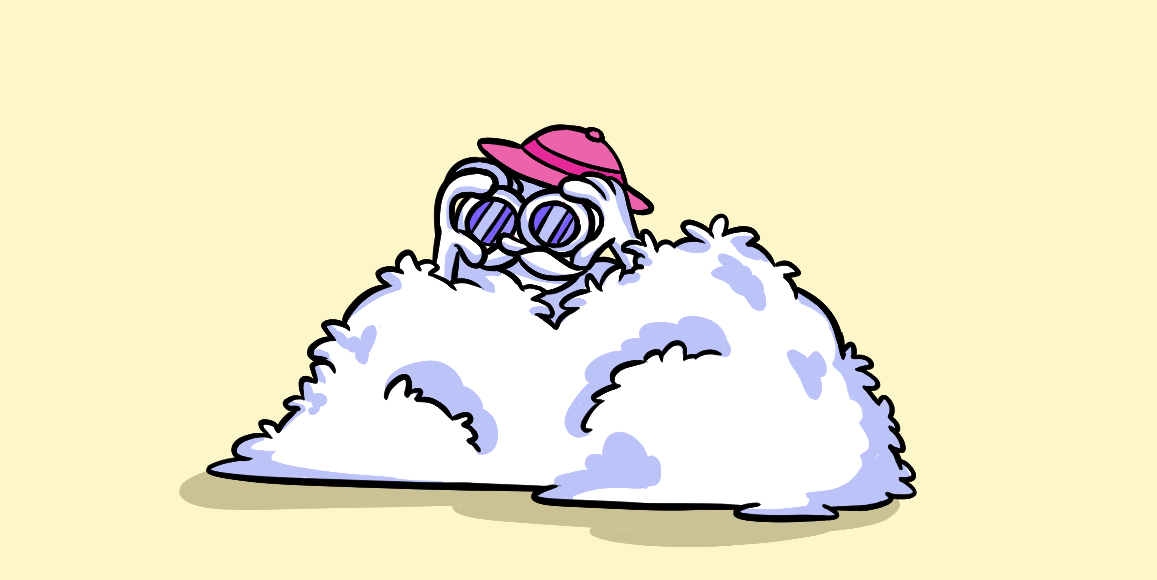Observing
A method for seeing how people will actually use a product out in the wild.
The nuts and bolts: Observing is a research method of spending time with a user and watching their behavior with the product as they use it in day-to-day life. An observer records their observations which provide qualitative outputs.
You know the old saying “a picture is worth a thousand words?” Well, it’s also true in product design.
If we don’t have a complete picture of how a person will interact with our designs, then we won’t have a complete understanding of whether or not it’ll be something users will actually want to use. We have to understand the very nuances of our users’ interactions, which aren’t always easy to discover through customer interviews and surveys.
, We have to observe them directly outside of a controlled environment to get a deeper view of how users will interact with a design. Observing is kinda like “guerrilla usability testing.”
Unlike scripted user tests, observing is all about seeing how people use a product when left to their own devices. We get to see what happens when users are way off the “happy path” of scripted testing. More than that, we get to see all the interesting decisions they’ll make, the app-breaking bugs they’ll find and where they’ll get stuck.
Guerillas in the Mist
Think of yourself as an anthropologist, say like Dian Fossy or Jane Goodall. You’ll be going into the wild to see how users are interacting with your designs, and it’s best to have a working, clickable prototype to take with you.
We’ve found that observing is most useful when you’ve already done more formal user testing and when there are many different paths a user might take in your prototype.
Of course, like an anthropologist, you can’t just rush into the jungle. You have to plan and consider when and where you’re actually going to be conducting your observations. Although we can’t speak about when it’s the best time to observe gorillas or chimps, we can talk about the best time to observe users.
We’ve found that the best two times when you’ll want to do observational testing are:
- You need to see what happens during edge cases when users are “off-script”
- You need to see how people use your product in different environments
Let’s dig into this a little deeper. Say you’re creating an iPhone to-do list app and you’ve recruited users to come by your office to follow along with a script you’ve created. That’s a great way to get reactions and see what makes sense and what doesn’t. But it’s not a very realistic scenario for how people might be using your app.
Once you launch your app, the likelihood they’ll be using it in your office all the time is pretty slim. After all, people use their mobile devices in all sorts of environments, often dividing their attention between your app and their friends, the TV or their morning train ride. Will those interactions you painstakingly created stand up to all these distractions?
With pencil and Moleskin in hand, you’ll want to do some direct observation to find out. Of course, we live in a wonderful modern world. You can also use photos or video to capture your observations so you can watch them again, looking for things that you might’ve missed.
On a Plane, On a Train, In a Car, On a Couch
When it comes to observing your users, there are a few good places to go. If you’re not able to get out of the office to do your observations, you might want to pick a casual setting in your office, say a couch (or a couch with a table filled with Legos, like we have in our office). You can also get out of the office and go to a coffee shop or some other public place, like the shopping mall.
Or, like a true-blue anthropologist, you can observe your users in their natural habitats, say their own work or home environments. Observing users at home works best if you’re also observing friends or family.
To Interfere or Not To Interfere
Remember “Star Trek” and that non-interference directive that kept the Enterprise crew from messing with the locals of an alien planet? They were only supposed to observe and report. It was their number one law, but they broke it all the time and meddled with the planet anyway. With user observation, you have a choice. You can either be unobtrusive or obstrusive. Let’s take a look at each one:
- Unobtrusive Observation — Like the name says, unobtrusive observation is where you’ll be hands-off, trying not to influence the users’ decisions or interactions. You won’t want to ask too many questions or do a lot of explaining here. If you do, you’ll risk not capturing the exact behavior of your users when you’re not around to help them navigate your product. One tip for unobtrusive observation: don’t let your note-taking get in the way. In other words, observe first then jot down what you saw.
- Obtrusive Observation — Of course, this is where you can get in there, explaining design decisions, asking questions and talking directly with users. This is where you can really get an idea of what users really think about your designs, which is something you can’t get by merely observing them. One tip for obtrusive observation: ask open ended questions.
Getting Under the Hood
Observing allows us to get under the hood of our users, seeing how they interact with our products so that we can go back and see what worked and didn’t work. More than that, we’ll also ferret out those user needs that we hadn’t even considered.
Get under the hood with Helio. Start with validating your audience so that you reach the right people for feedback.





